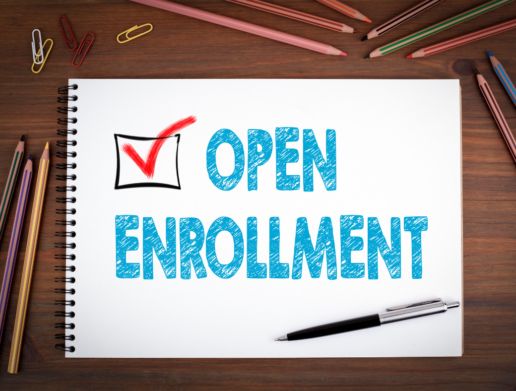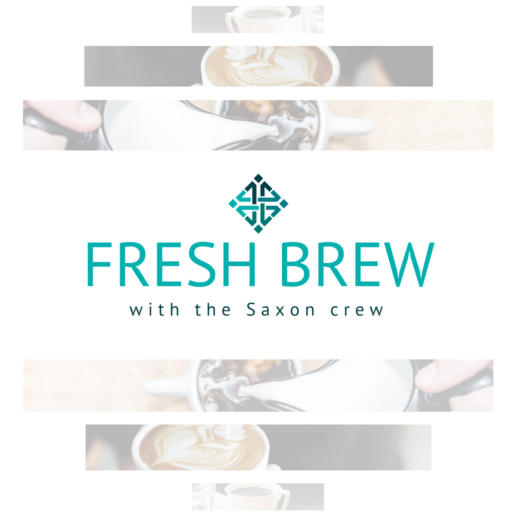How to Help Your Small Workplace Team Succeed
Often many small workplace teams have higher rates of productivity, due to a lesser amount of disruptions. Although there are more projects put onto single people instead of groups, it may not be a bad thing. Read this blog post for helpful tips on how to help your small workplace team succeed.
Are small workplace teams effective? Some savvy business innovators think so. After all, it was Amazon.com founder Jeff Bezos who once said, "If you can't feed a team with two pizzas, it's too large."
Academia agrees. A 2019 Harvard Business Review study leans toward smaller teams. The study suggests that small workplace teams can "disrupt" conventional wisdom and get things done, according to authors Dashan Wang, a management professor at Northwestern University, and James A. Evans, a sociology professor at the University of Chicago.
"Our research suggests that team size fundamentally dictates the nature of work a team is capable of producing, and smaller team size confers certain critical benefits that large teams don't enjoy," Wang and Evans stated.
The study sought to "measure the disruptiveness" of workplace teams using "an established measure of disruption that assesses how much a given work destabilizes its field."
"This told us how the research eclipsed or made us rethink the prior 'state of the art,' setting a valuable new direction for others to follow," Wang and Evans wrote.
Why Small Teams Can Succeed
As Bezos and the Harvard Business Review study authors show, bigger is not necessarily better when it comes to workplace teams.
"Given the right resources, small teams can be incredibly powerful," said Michael Solomon, co-author of Game Changer: How to Be 10x in the Talent Economy (HarperCollins Leadership, 2020) and co-founder of 10x Management, a technology talent recruiting firm in New York City.
Solomon deploys an armed forces analogy to highlight the effectiveness of smaller workplace teams.
"If we think about the military, special ops are usually small units of highly trained, highly synchronized individuals who have prepared extensively, know each other incredibly well and are working toward a common goal," he said. "If companies can create a culture for small teams where there is a shared mission, a safe environment for constructive feedback and trust, there is little that can't be done."
For one project at his company, Solomon said, a team of between three and five people replaced a group of 35 to rebuild a product. "It was the right group of people with the right skills in the right culture, and they were able to literally achieve 10 times the result" of the larger team.
While smaller, more-nimble teams are commonplace at small businesses and startups with tight budgets, the concept can work at any company.
"Small teams can definitely be competitive against bigger teams, but the strategies are different," said John Doherty, chief executive officer and founder of GetCredo.com, a digital marketing company in Denver. "For instance, bigger teams will often have a lot more meetings and voices at the table, whereas smaller teams tend to motivate around a singular goal and focus. It really depends on what a company wants to achieve."
Getting Results with Smaller Teams: Top Tips
Team-building experts advise managers to consider these tips when building small teams:
Build an "ownership" mindset. Emphasizing ownership in a specific skill set is a great way to build small teams.
"Giving each person on a team an area of ownership helps small teams become more effective," Doherty said. "For example, I own business and marketing, my business partner owns the technology/software side, and we also have specialists on accounts, operations and finance."
Doherty's team uses Front, a business management tool, to steer tasks to the right person. "If something comes into our respective e-mail inboxes that should be handled by someone else, we can easily assign it to them and keep moving forward," he said.
Make accountability non-negotiable. Since fewer staffers are available, holding team members accountable is a must for small workplace teams.
"A smaller workplace team needs a combination of ingredients to succeed," said Deborah Sweeney, CEO of MyCorporation.com, a business startup services provider in Calabasas, Calif.
Sweeney lists several traits she looks for when building smaller, efficient company teams:
- They must own their responsibilities. "Team members must be accountable for their work and for being able to drive assignments and initiatives."
- They should be accessible. "There must be an understanding of how to reach a team member with open communications leading to answers."
- They must be flexible. "Being flexible is important, as things quickly change and each member of a team must be nimble enough to handle those changes."
- They must be creative. "Smaller workplaces have fewer resources and less budget than companies with more money and team members. Creativity allows you to brainstorm ideas with your team that are cost-effective. These ideas may help differentiate your brand [from] an expensive option."
Start planning early. Waiting until the last moment to get an assignment started and accomplished is a non-starter for those managing smaller teams.
"Sometimes, starting late cannot be helped, as some assignments come through with tight deadlines," Sweeney said. "When that happens, it's critical that managers address the new priority with their teams, put a hold on existing work, and divide and conquer to quickly get the item with the most urgency completed."
When possible, managers should also encourage small teams to work ahead. "If they're caught up with one piece of their workload, have them start a piece that has been set aside for later," Sweeney added.
Curb team meetings. "With a smaller staff, I strive to avoid meetings," said Lotus Felix, founder of Flawless Content Shop, a content marketing company in West Palm Beach, Fla. "Conventionally, meetings may appear as the backbone of businesses, but there is so much your team can achieve when you slice down the frequencies of these meetings. At Flawless Content Shop, we have been able to up our monthly output by 175 percent by keeping some days entirely meeting-free."
Felix said having a full day without meetings allows his team to build incredible momentum. "This way, my staff can get fully enveloped in their daily to-do lists," he said.
Give your team flexibility, across the board. Felix strives not to "drown staffers in overbearing professionalism.
"For example, we don't have a strict dress code," he noted. "Personally, I have gone to the office in slippers. I wear ripped jeans on casual days, and most Fridays I Rollerblade to work."
Felix said he views this as "a deliberate attempt to unshackle my small team, giving them more vacuum for creative expression."
Measure performance and value. Focus on how your workplace team adds value using three measures: how they help make money, save money or reduce your company's risk.
"Keep track of your team's accomplishments and, as much as possible, determine the return on investment for your smaller team's contributions to the company," said Terry McDougall, owner of Terry B. McDougall Coaching, in Highland Park, Ill. "When you can demonstrate a positive return on investment, this is generally when C-suite leaders feel confident that increased investment in your team will result in a greater return for the company."
Let go of bad performers. Above all else, don't let underperforming team members stick around, because total team performance can suffer.
"With smaller teams, one bad apple can really destroy the culture of a team," Solomon said. "Believing that you can overlook one underperforming or difficult member of the team may be the biggest mistake managers make in running small teams."
In his book, Game Changer, Solomon talks about workers with a "sabotage impulse" who "avoid responsibility for their own actions and are very quick to blame others. No one is eager to have them around because they never feel safe with someone around ready to blame others for their own mistakes."
Too often, team leaders overlook these behaviors in hopes that the worker will rectify his or her behavior.
"In reality, these types of individuals … can be incredibly destructive for small workplace teams," Solomon said. "It's very important to remove them quickly to avoid an adverse impact on the rest of the team."
SOURCE: O'Connell, B. (29 September 2020) "How to Help Your Small Workplace Team Succeed" (Web Blog Post). Retrieved from https://www.shrm.org/resourcesandtools/hr-topics/people-managers/pages/helping-small-teams-succeed-.aspx
Too much screen time from remote work? These tips can combat uncomfortable eye strain
Sitting behind a desk can cause more than just neck and shoulder pain, it can also cause many eye problems and not just headaches and hazy eyes. Read this blog post for helpful tips.
With much of the workforce working from home, employees are spending more time than ever on digital devices — and it’s been a real headache.
Too much screen time causes eye strain, which often leads to headaches, dry and irritated eyes, and neck and shoulder pain, according to a study by the Vision Council. Light emitted from digital devices can also suppress melatonin levels, preventing a good night’s sleep. To combat the uncomfortable side effects of screen time, optometrists and online retailers are marketing blue light filtering glasses, which claim to reduce or eliminate eye strain by blocking the light that causes it. But do they really work?
“Some people say it’s a hoax, some say it helps — but in my experience, about eight or nine out of 10 patients say they really notice a difference after using blue light lenses,” says Dr. Alina Reznik, an optometrist with the mobile optometrist company, 20/20 Onsite. “I do love these lenses — I’ve seen people feel more comfortable and get better sleep throughout the night.”
Eyes are also exposed to blue light from the sun, but staring at screens for long periods of time is what causes eye fatigue, Reznik says. Blue light filtering glasses and contact lenses are designed to prevent blue light from entering the eye and causing symptoms.
“When blue light enters the eye, it scatters and our eye perceives it as glare and has to work overtime to keep our vision clear and focused,” says Jen Wademan, an optometrist with VSP — the largest vision insurance provider in the U.S. “It’s like a muscle — if you engage that muscle, it fatigues.”
The optometrists say blue light exposure also causes people to stop blinking while using digital devices. Wearing blue light lenses can help prevent that, they say.
“You don’t think about it when it’s happening, but when we’re on our computer or phone, we don’t blink as much,” Wademan says. “Blinking lubricates our eyes, so when we don’t do it as much, our eyes get dry and irritated.”
Wademan and Reznik recommend that employees talk to their optometrist about different options for combatting eye fatigue — even those who don’t need corrective lenses to improve their eyesight. Reznik says employees can find high-quality lenses online, but employees need to do a lot of research to verify their legitimacy.
“When people say blue light lenses don’t work, it’s often because they’re not wearing them long enough, or because they’re using low-quality lenses that aren’t actually blocking the blue light,” Reznik says.
People with 20-20 vision can still use vision benefits to purchase lenses to combat eye fatigue, Reznik and Wademan say.
“There’s so many blue light filters on the market online, but your best option is to have an eye exam to talk about your concerns,” Wademan says. “[Optometrists are] held to higher standards, so you can validate that the lenses are high quality.”
Wademan pointed out that people with perfect eyesight should still visit an eye doctor regularly.
“What we do is more than just vision, we look to make sure your eyes are running efficiently and properly,” Wademan says. “We’re also able to monitor chronic conditions like glaucoma and diabetes through eye exams to address them quickly.”
Reznik and Wademan say blue light exposure is not the only vision concern employees should address during the pandemic. The amount of time people spend looking at their screens without breaks, and the distance between themselves and the monitor, have an impact on vision health too.
“You can actually make yourself near-sighted by not taking breaks to look out the window into the distance,” Reznik says. “Our eyes are like muscles, and muscles need to be engaged in order to work properly.”
In addition to wearing blue light lenses, Reznik and Wademan say employees should practice the 20-20-20 rule: look away from your screen every 20 minutes at something 20 feet away for at least 20 seconds. Computer screens should also be placed at arms’ length to reduce eye strain. But, most importantly, they said employees and their children should have regular appointments with their eye doctor.
“So much of what kids learn is through their eyes, so it’s really important to make sure they’re running efficiently,” Wademan says. “We can’t do much without our eyes, so if you have vision benefits, you should definitely use them.”
SOURCE: Webster, K. (24 September 2020) "Too much screen time from remote work? These tips can combat uncomfortable eye strain" (Web Blog Post). Retrieved from https://www.employeebenefitadviser.com/news/tips-for-combatting-eye-strain-from-too-much-screen-time
HR Professionals Struggle over FMLA Compliance, SHRM Tells the DOL
In addition to the daily struggles that HR Professionals have to resolve, they are faced with many frustrations that have stemmed from the federal Family and Medical Leave Act (FMLA). Read this blog post to learn more.
In a Sept. 15 letter to the U.S. Department of Labor (DOL), the Society for Human Resource Management (SHRM) highlighted many of the challenges and frustrations that confront HR professionals as they comply with the federal Family and Medical Leave Act (FMLA).
"SHRM supports the spirit and intent of the FMLA, and our members are committed to ensuring employees receive the benefits and job security afforded by the act," wrote Emily M. Dickens, SHRM's corporate secretary, chief of staff and head of Government Affairs. "While it has been more than 25 years since FMLA was enacted, SHRM members continue to report challenges in interpreting and administering the FMLA."
The letter, developed with input from SHRM members, was in response to a request for information issued by the DOL's Wage and Hour Division on July 17. The DOL solicited comments and data "to provide a foundation for examining the effectiveness of the current regulations in meeting the statutory objectives of the FMLA."
According to Ada W. Dolph, a partner at Seyfarth Shaw who practices labor and employment law in Chicago, “SHRM’s comments echo what we are hearing from clients in terms of their challenges in implementing FMLA leave, particularly now with the patchwork of additional state and local leave requirements that have emerged as a response to COVID-19."
She added, "Our experience shows that regulatory gray areas add significant costs to the administration of the FMLA and impact the consistency with which the FMLA is applied to employees. We are hopeful that [the DOL] will implement SHRM’s proposed revisions, which provide much-needed clarity for both employers and employees."
Wide-Ranging Challenges
In its comment letter, SHRM addressed several issues its members have reported:
CHALLENGES WITH CONSISTENTLY APPLYING THE REGULATORY DEFINITION OF A SERIOUS HEALTH CONDITION
"Continuing treatment by a health care provider" as currently defined in federal regulations creates uncertainty for SHRM members on how to treat an absence of more than three consecutive days, according to SHRM's letter. "If there is not 'continuing treatment,' then it does not constitute a 'serious health condition' under the regulations," the letter explained. "However, if the employee does receive additional treatment, it's not clear whether these initial three absences are related to a serious health condition."
SHRM pointed out that several members "have suggested increasing the time period of incapacity, indicating they spend a lot of time processing employee certifications for missing four days that they believe more readily falls under sick time or paid time off."
Further guidance, including criteria and examples of when employers may obtain second and third medical opinions, "would be helpful, as many SHRM members reported declining to challenge an employee's certification at all because the conditions under which they may challenge those certifications are unclear or cumbersome," SHRM said.
Members also reported that obtaining documentation from health care providers on the need for employees to take leave to care for a family member with a serious health condition was difficult, and that doctors were often vague about identifying how the employee fits into the caregiving equation.
CHALLENGES WITH INTERMITTENT LEAVE
SHRM members reported that intermittent leave-taking is the most likely FMLA leave to be abused by employees.
"Employees are permitted to take incremental leave in the smallest increment of time the employer pays, as little as .10 of an hour, which members reported allowed employees to use the time to shield tardiness or other attendance issues," the letter read. "SHRM strongly urges [the DOL] to increase the minimum increment of intermittent or reduced schedule leave that is unforeseeable or unscheduled, or for which an employee provides no advance notice." SHRM suggested several alternative approaches.
For instance, the DOL could:
- Require that employees take unforeseeable or unscheduled intermittent or reduced schedule leave in half-day increments, at a minimum.
- Establish a smaller increment, such as two hours, that automatically applies in any instance in which an employee takes unscheduled or unforeseeable intermittent or reduced schedule leave.
Additionally, when an employee takes intermittent or reduced FMLA leave, an employer may transfer an employee to an alternative position. However, under current regulations, employers may only require such a transfer when the leave taken is for "a planned medical treatment for the employee, a family member, or a covered servicemember, including during a period of recovery…."
"Given the potential burden and hardship that intermittent and reduced-schedule leave have on employers, SHRM believes that an employer should be permitted to temporarily transfer an employee on intermittent or reduced-schedule leave to an alternative position, regardless of whether the leave is foreseeable or unforeseeable or whether it is scheduled or unscheduled," SHRM told the DOL.
CHALLENGES REGARDING EMPLOYEES WHO ARE CERTIFIED FOR INTERMITTENT LEAVE FOR CONSECUTIVE YEARS
Employees continue to regularly exhaust and replenish their 12-week FMLA entitlement, based on the rolling 12-month entitlement period, SHRM members reported.
"Combined with the Americans with Disabilities Act Amendments Act requirements to accommodate absences under some circumstances, these unrelenting absences become unreasonable and unduly burdensome to employers," SHRM commented.
Similarly, many SHRM members reported being frustrated that there weren't more mechanisms to challenge potential abuses of intermittent leave (e.g., when employees take every Friday or Monday off).
FRUSTRATION WITH EMPLOYEES NOT PROVIDING SUFFICIENT NOTICE OF THE NEED FOR LEAVE
Many employees provide notice of even foreseeable leaves after the leave has begun, noted SHRM, which recommended that notice of foreseeable leave be required prior to the commencement of leave and not "as soon as practicable."
SHRM also suggested that "a more definitive requirement be imposed so that employees understand clearly that they must provide notice of leave prior to beginning leave," and that "if an employee does not give advance notice, it should be the employee's burden to articulate why it was not practicable to provide such notice prior to the start of the leave. If they are unable to meet this burden, the regulation should permit and specify the consequences."
DIFFICULTIES OBTAINING TIMELY RESPONSES FROM EMPLOYEES AND THEIR PHYSICIANS TO SUPPORT THE REQUESTED LEAVE
If an employee fails to provide sufficient information to demonstrate that he or she may seek FMLA leave, then the employee can be required to provide additional information "to determine whether an absence is potentially FMLA-qualifying," SHRM explained. "However, there is no deadline by which the employee must provide this clarifying information, resulting in extensive, continued delays and continued administrative burdens."
SHRM recommended tightening this time frame to seven days and that the DOL "endeavor to provide firmer and clearer deadlines and notice requirements throughout the regulations."
SHRM members also reported that health-provider fees for completing paperwork often slowed or halted the certification process and asked whether providers' ability to impose these fees could be limited.
New FMLA Forms
Overall, SHRM members expressed satisfaction with recently updated FMLA forms. However, members continue to report that the information received from medical providers is often unclear and that they struggle to determine whether the reported condition constitutes a serious health condition.
The new forms do not account for the possibility that an employee does not qualify for FMLA because the employee doesn't meet the requirement of being unable to perform the functions of his or her job. "As such, we suggest that the medical provider be given the option to indicate that an employee does not meet this requirement," SHRM wrote.
Many members suggested that the DOL allow completion of online forms to speed processing times and reduce the administrative burdens of processing FMLA leave.
Among other issues, SHRM members also reported struggling with how to effectively reconcile FMLA with other leave laws enacted in the wake of the COVID-19 pandemic.
SOURCE: Miller, S. (21 September 2020) "HR Professionals Struggle over FMLA Compliance, SHRM Tells the DOL" (Web Blog Post). Retrieved from https://www.shrm.org/resourcesandtools/hr-topics/benefits/pages/hr-professionals-struggle-over-fmla-compliance-shrm-tells-the-dol.aspx
Pandemic Forces Organizations to Get Creative in Prepping Young Employees for the Workplace
Many are still having to work remotely, and become introduced to a company while not in an office setting. This may be hard for many entry-level beginners, interns, and recent college graduates. Employers are now trying to find ways to creatively prepare young employees for a non-traditional workplace. Read this blog post to learn more.
Pairing remote "buddies" with interns, creating leadership boot camps and hosting virtual presentations with college students are a few of the ways employers are preparing young employees for the workforce at a time when the pandemic has forced many employers to adopt a work-from-home culture.
"This pandemic has necessitated all employers to be agile and adapt to a 'new age' workforce and workplace—namely, a decentralization of employees and ability to work remotely," pointed out David Owens, director of campus recruiting at Addison Group, a national staffing and recruiting firm based in Chicago.
"Prepandemic, the majority of internships and entry-level employment opportunities were in-office or involved a majority of in-person daily responsibilities and tasks. Thankfully, in today's climate, we have the capability and technology to shift these in-person or in-office duties virtually. Leading organizations were already transitioning to a more modern concept of work," he said.
"This has been a hot-button inquiry from new graduates and this incoming generation of talent, many of whom are looking for their future workplace to be flexible and agile. More and more organizations will be tested on their adaptability to offer similar work options."
The pandemic has created a need for more in-depth and strategic partnerships with colleges and universities for recruiting students, Owens noted. Hosting a virtual panel or presentation for students is a better option right now than setting up a booth at a widely attended career fair, he said.
"I also recommend forming strategic partnerships with related student organizations and clubs that have a strong presence on campus. Additionally, be an ally to students, many of whom are stressed-out enough adapting to a hybrid or entirely virtual school year. Offer resume reviews, mock interviews, short-stint internships and networking events. Even if they don't apply for a full-time position, it helps to build brand recognition, and they could even end up applying to work at your organization down the road."
Online Networking
"We've been hosting online network events for individuals who are looking to come into the industry," said Carla Diaz, co-founder of BroadbandSearch, a company with 15 employees who all work remotely. Her company helps clients find the best Internet and TV service.
"Since we have connections within the world of ISPs [Internet service providers] and the like, we thought it would be a great idea to give up-and-coming professionals the chance to meet people within the industry—especially since many networking events were canceled as a result of COVID-19."
The events are not large, she said, but they can help young adults make important connections. Some, for example, have led to internships at Broadband.
'Firsthand Exposure'
Synoptek, a global systems integrator and managed information technology (IT) services provider headquartered in Irvine, Calif., designed DiscoverIT for recent college graduates in the U.S. It is a six-month, highly intensive training in technology, project management, the Information Technology Infrastructure Library, security and leadership. The program includes mentorship and technical and leadership boot camps, according to Danielle Andersen, vice president of global human resources at Synoptek.
The company continued its college recruitment program during the pandemic, hiring six employees during the summer.
"The program gives fresh college graduates firsthand exposure to IT consulting," she said.
And its 12-month mentorship, which pairs mentees with a company business leader at its various sites, has been using Microsoft Teams during the pandemic to meet semimonthly. It's a chance, Andersen said, for mentees "to gain more in-depth knowledge about our business model, polishing their professional image and building overall leadership skills."
The coronavirus outbreak should not be a hindrance for young professionals, said Sonya Schwartz, managing editor at Her Aspiration in the Jackson, Miss., area and founder of Her Norm, a relationship website. Her fully remote company, which employs six workers, hires at least one new graduate per department annually and plans to continue to do so, she said.
"I make sure to expose them to the ins and outs of the company to make them more familiar with the whole working process. There is a specific employee assigned for their virtual training, and chatrooms designated for them are made to ensure that all of their questions or clarifications are answered," Schwartz said.
A senior employee assigned to train a new employee also serves as the new hire's guide for daily tasks.
"Initially, we ask the new grad which part of their career they want to focus on and enhance so that they could undergo training, and, once they have decided, we will assign them to the person who we believe can contribute and can train them well in that field and will also serve as their immediate superior," she said.
Trainees attend meetings with potential clients to learn the importance of effective communication and are assigned minor projects, such as conducting research and minor layout of content. They also are given social media management tasks to develop industry-related skills.
Buddy System
The Expense Reduction Group in Baltimore stresses role modeling as a way to prepare and transition emerging professionals, according to founder and CEO Michael Hammelburger. The company, which opened in 2019, employs four staffers.
"Each new hire is unique; that's why I have implemented a buddy system for them," said Hammelburger, financial consultant for small and midsize businesses.
"We assign each of our newbies a tenured employee they can ask any question about the company to make them feel more comfortable as they adjust to their new workplace." During the first six months of hire, each buddy does a daily Zoom meeting, and there are weekly team meetings that include the buddy's new-hire cohort.
"It also breaks away from the formal onboarding seminars that are dull and boring. During our feedback process, our new hires always mention how easy it became for them to adjust."
SOURCE: Gurchiek, K. (23 September 2020) "Pandemic Forces Organizations to Get Creative in Prepping Young Employees for the Workplace" (Web Blog Post). Retrieved from https://www.shrm.org/resourcesandtools/hr-topics/organizational-and-employee-development/pages/pandemic-forces-organizations-to-get-creative-in-prepping-young-employees-for-the-workplace-.aspx
5 open enrollment communication strategies for your remote workforce
As the employee benefits workforce continues to stay remote in a majority of places, it's important for them to strategize their communication especially as open enrollment season is coming around the corner. Read this blog post for helpful tips.
Even before the COVID-19 pandemic forced many employers to switch from a mostly onsite workforce to a remote or dispersed workforce, employers were faced with effectively and consistently communicating benefits to employees who were located in different locations, whether that meant offices in different cities or countries; work from home employees; employees working in warehouses, factories, and distribution centers; or employees working at different branches of retail or service businesses.
This communication is important because when employees are unaware of what benefits are available or don’t know how to access their benefits, utilization can drop significantly, so neither employees nor employers are getting value from the benefit offerings. In addition, when employees aren’t using or aware of their benefits, satisfaction with employers decline, which can impact both productivity and retention.
The goal is to both effectively and continuously communicate with employees and build awareness and understanding of available benefits, not just during open enrollment, but all year long. Of course, each communication strategy will be shaped by the organization’s culture, but there are several tools that employers should consider including in their benefits communication toolkit.
Diversify your benefits communication tools
Before developing your benefits communications plan, determine how employees prefer to receive this information by surveying them. In most organizations, there will be several different approaches that appeal to employees because of differences in employee ages, locations (office vs. warehouse or delivery truck), and comfort level with technology.
In the past, standard benefits communications were printed materials that were either distributed at work or mailed home. And while this tool is still effective and gives employees something they can use as a reference throughout the year, there are several other tools that employers should consider using to reach their diverse employee audiences.
Dedicated benefits websites and/or mobile apps broaden access to information
Unlike printed materials, with an online benefits site and mobile app employees can access the content wherever they are, whenever they want, and employers can update the information frequently without incurring printing costs. The site can also serve as a convenient way for employees to ask benefits questions, which can be answered by email from an HR team member, a benefits vendor’s support team or for simple, frequently asked questions, by a chatbot.
Email or text?
Employers will most likely need to include both emails and texts in their plans, but these tools may be used in different ways and with different audiences. For example, texts are a good way to reach employees who are younger or more tech savvy as well as those who are on the road a great deal or don’t work at a desk. These messages will be shorter and will focus on prompting employees to take specific actions, such as enrolling in benefits, updating beneficiaries or submitting receipts for reimbursement under an FSA, HSA, or HRA. They can also be used to remind employees about underutilized benefits to drive participation.
Emails can communicate more detailed information and directly link employees to benefits websites and other resources. However, emails should be kept as succinct as possible to ensure that employees are not overwhelmed with information and skip reading the communication.
Open channels for two-way communication
Providing benefits information to employees is only one part of the communication equation. Employees also need frequent opportunities to ask questions and share their thoughts on what they want and need from their benefits plan. That can be harder to make happen for a dispersed workforce, but video-based webinars, town hall meetings and “ask me anything” sessions with members of the benefits team can be effective approaches.
To ensure everyone has access to information regardless of location or job type there should be multiple sessions for different time zones and schedules, and the sessions should be recorded, posted on the company employee site and include the opportunity to email or text in questions for employees who cannot attend a live event.
Try out-of-the-box communication tools to engage employees
In addition to more traditional communication tools, consider trying different formats that make information more digestible and engaging, such as quizzes, polls, short videos, infographics and storytelling. The goal is to keep employees interested in what their benefits offer and what’s new to help them get the most out of their plans.
SOURCE: Varn, M. (14 September 2020) "Views 5 open enrollment communication strategies for your remote workforce" (Web Blog Post). Retrieved from https://www.employeebenefitadviser.com/list/5-open-enrollment-communication-strategies-for-your-remote-workforce
Fresh Brew With Matthew Bosse
Welcome to our brand new segment, Fresh Brew, where we will be exploring the delicious coffees, teas, and snacks of some of our employees!
“You will not see satisfactory achievements if no action is taken to get there.”
Matthew Bosse is a Data Analyst at Saxon Financial Services.
Matthew’s journey to becoming a Data Analyst at Saxon began at Sunspot Pool and Patio during his 4-year, academic career. It taught him the importance of professional communication, as well as how to resolve issues for a customer in the best possible way.
In his off time, Matthew spends it with his Mini Goldendoodle named Jameson and with his close family and friends. He also loves to build model cars, go golfing, playing pickup soccer and building fun projects.


Rounding Third
Matthew enjoys sipping on his favorite brew, Rounding Third, while sitting outside at Madtree, relaxing.

Spicy Balls
Matthew enjoys sipping on a Bud Light and snacking on Spicy Balls at Dana Garden.
Strategies for maintaining employee trust during executive turnovers
While being in the midst of the COVID-19 pandemic, it's important to keep employee trust and confidence intact. As there may be turnovers and layoffs happening with executives, it's key to communicate with employees that their employers are listening. Read this blog post to learn more.
As businesses struggle with the obstacles of maintaining a new workplace normal in the midst of the coronavirus crisis, ambiguity and unpredictability can threaten employee trust and confidence.
Sweeping layoffs across all industries are putting more pressure on that delicate relationship between employers and employees. Employers increasingly must reassure employees about their job security and the stability of the company, and how they respond will have long-term ripple effects on loyalty and potential turnover, experts say.
“A CEO’s exit or a round of layoffs can have a detrimental effect on employee retention and well-being if not addressed properly,” says Laura Hamill, chief science officer and chief people officer at Limeade, an employee experience company. “It’s important to show employees as soon as possible that you are listening, that you understand their concerns, and that you are working to address them.”
Just before the virus took root in the U.S., former Walt Disney CEO Bob Iger unexpectedly stepped down at the end of February. Around the same time, Expedia laid off 12% of its global workforce, which came on the heels of Wayfair’s January layoffs. Online travel agency Booking announced in early April that CEO Glenn Fogel has tested positive for coronavirus but still plans to continue with his responsibilities.
These major changes can create a lot of uncertainty within an organization, leaving HR and senior leadership in charge of keeping the business on track and reducing employee turnover.
“CEO shake ups [and layoffs] can create two disharmonies,” says Dania Shaheen, vice president of people operations at Kazoo, an employee experience platform. “There is always a lot of noise created with things like this, gossip about why someone stepped down. This tends to be very distracting from what the business is actually doing.”
The often abrupt departure of a CEO can also lead to a shift in strategy, Shaheen says. While a CEO’s vision for a company can be a rallying cry within the organization when that changes, it can upset the company culture. But there are steps employers can take to get out ahead of this.
In the case of Disney, Iger has remained on board to insure the strategy he has established remains in place. This can help ensure a smoother transition of power.
“The more transparent [a company is] and the more open they are internally about what’s going on is going to be key,” Shaheen says.
Frequent and open communication is another necessity for employers during times of business tumult, Hamill says. By planning for the worst-case scenario and having a clear communication policy, organizations can address employee concerns, collect feedback, gauge sentiments, and implement change quickly. Employers shouldn’t wait until they have all of the answers buttoned up.
“When a major change occurs, organizations need to put employees first,” Hamill says. “Be transparent with employees and offer two-way communication – ensure that people feel supported. This needs to come from all angles — from leaders, managers, and internal teams like human resources.”
An organization’s culture is only as strong as the example being set by its senior leadership. In response to mass layoffs and financial losses, many CEOs and other executives have decided to take pay cuts or forego their salaries. New Disney CEO Bob Chapek will take a 50% pay cut, while Iger — who remains with the company as executive chairman — will forgo his entire salary.
Dick's Sporting Goods announced that CEO Ed Stack and President Lauren Hobart will forgo their salaries and Marriott CEO Arne Sorenson will not take home any salary for the rest of the year. The rest of the executive team will take a 50% pay cut.
When organizations set an example that you’re focused on protecting your employees, it will instill trust and create a more loyal workforce.
“Culture is absolutely critical for growth and success and you want to make sure that the culture stays steady,” Shaheen says. “You have to make sure you’re continuing to build a very purpose driven culture.”
SOURCE: Schiavo, A. (06 April 2020) "Strategies for maintaining employee trust during executive turnovers" (Web Blog Post). Retrieved from https://www.employeebenefitadviser.com/news/strategies-for-maintaining-employee-trust-during-executive-turnovers
Employers Still Hiring During Coronavirus Pandemic
As many companies begin to temporarily close their doors due to the COVID-19 pandemic, there are several companies that are beginning to hire mass amounts of employees. Although employers run the risk of hiring effectively, they are in need of employees. Read this blog post to learn more.
When one door closes, even temporarily, another often opens. As people practice social distancing to avoid contracting COVID-19—the disease caused by the coronavirus—restaurants, bars and retailers across the U.S. are closing their doors and laying off tens of thousands of workers. But needs must be met, so online sellers and a host of other businesses are mass hiring for delivery, security, warehousing and distribution personnel.
Amazon announced a push to add 100,000 workers to address customer need. National grocery chains are ramping up hiring for delivery staff, Walmart is looking for more than 1,000 distribution-center workers, and health care providers are ramping up hiring to address the expected surge in patients. Retailers and pizza chains are boosting their payrolls to meet takeout and delivery demand, even as their locations are closed to guests. A security company just announced mass hiring to fill full- and part-time security vacancies to help provide public-safety services.
The challenge for these organizations will be to hire quickly and effectively at scale, without putting recruitment professionals and the public at risk. Technology is driving the effort. Online applications, video interviewing, online onboarding and more are being leveraged to enable fast, effective hiring.
Meeting the Need—Safely
Josh Tolan, CEO of video-interviewing company Spark Hire, said, "Technology gives hiring pros a huge leg up in their processes. Especially during this pandemic, tools like video interviews and online applications achieve the goals of continuing recruitment efforts, learning more about applicants and speeding up the hiring process—all from an appropriate social distance."
Amy Champigny, senior product marketing manager at Deltek, a software provider for project-based work, said that competition for workers may require employers to actively self-promote. "Organizations should focus on posting job requisitions online and focus on boosting their LinkedIn branding, as well as employer presence, during this time," she said. She recommended that employers, along with making sure their brand is visible, move candidates through the hiring process as quickly as possible. "Businesses should consider candidate pools to speed up recruiting cycles for all roles and especially critical, hard-to-fill positions."
Many companies are practiced in mass hiring, said Peter Baskin, chief product officer at recruitment software company Modern Hire. "Similar to mass hiring for seasonal positions, companies should adopt purpose-built, on-demand text and video interviewing tools," he said. "This will allow them to reach a larger audience of candidates, provide candidates with the information needed about the open jobs, allow for both parties to complete the interviewing process quicker, and, in return, roles can be filled at a faster rate."
From Start to Finish
Effectively employing technology in hiring begins with an online application process that's seamless and at scale. Baskin suggested that recruiters work from home whenever possible, utilizing on-demand text and video technology instead of scheduling in-person interviews.
"HR teams must ensure any technology they use—whether for recruitment, prehire assessments or video interviewing—is purpose-built, not only for the task at hand, but also for the specific company and industry in which they operate," he said.
"From home," Tolan said, "candidates can conduct one-way video interviews that they record on their own time and the hiring team can review at their convenience, as well." Further along in the process, he added, "live video interviews allow the hiring team to connect with the candidate face to face without the handshake and any potential exposure to the [coronavirus]."
Good Hires vs. Fast Hires
Even when time is of the essence, quality can't be ignored. Many organizations use prehire assessment questions, which a candidate can answer during the video application process. These allow recruiters to quickly make a determination on moving the job seeker through to the next step.
For some organizations, artificial intelligence is being leveraged to boost hiring metrics. "Data-driven insights can predict hiring success by measuring personality traits and problem-solving skills," Tolan said, "and compare candidates to job benchmarks customized for your company."
Onboarding at Scale
When candidates are selected, onboarding at scale is the next hurdle for organizations. "Onboarding needs to be standardized and repeatable to help organizations onboard a greater number of candidates during periods of growth or at scale," Champigny said. "Comprehensive [applicant tracking system (ATS)] solutions include onboarding portals to help companies provide a consistent experience for new hires, while ensuring that those new hires have a good experience as they come through the door."
SOURCE: O'Donnell, R. (29 March 2020) "Employers Still Hiring During Coronavirus Pandemic" (Web Blog Post). Retrieved from https://www.shrm.org/ResourcesAndTools/hr-topics/talent-acquisition/Pages/Employers-Still-Hiring-During-Coronavirus-Pandemic.aspx
Labor Department Is Now Enforcing Coronavirus Paid-Leave Rules
As the U.S. Department of Labor gave employers sufficient time to comply with paid-leave through the Families First Coronavirus Response Act, many businesses can provide paid-sick-leave for employees if it is needed. Read this blog post to learn more.
The U.S. Department of Labor (DOL) initially gave employers time to comply with coronavirus-related paid-sick-leave and paid-family-leave mandates and correct mistakes without facing scrutiny, but the department has officially ramped up its enforcement efforts.
Under the Families First Coronavirus Response Act (FFCRA), many businesses with fewer than 500 employees must provide up to 80 hours of paid-sick-leave benefits if employees need leave to comply with a self-quarantine order or care for their own or someone else's coronavirus-related issues. The act also provides emergency paid family leave for parents who can't work because their children's schools or child care services are closed due to the pandemic.
The FFCRA's paid-leave provisions took effect April 1 and expire on Dec. 31. The DOL announced on April 20 that the nonenforcement period had officially ended, and the department issued its first enforcement order shortly thereafter. An electrical company based in Tucson, Ariz., was ordered to compensate an employee who was denied paid sick leave after he showed coronavirus symptoms and was told by a doctor to self-quarantine. The employer was ordered to pay the worker $1,600, which covered his full wages ($20 an hour) for 80 hours of leave.
"This case should serve as a signal to others that the U.S. Department of Labor is working to protect employee rights during the coronavirus pandemic," said Wage and Hour District Director Eric Murray in Phoenix. "We encourage employers and employees to call us for assistance to improve their understanding of new labor standards under the [FFCRA] and use our educational online tools to avoid violations like those found in this investigation."
We've rounded up articles and resources from SHRM Online on the FFCRA.
Paid-Sick-Leave Details
Under the FFCRA, covered employers will have to provide up to 80 hours of paid-sick-leave benefits if an employee:
- Has been ordered by the government to quarantine or isolate because of COVID-19.
- Has been advised by a health care provider to self-quarantine because of COVID-19.
- Has symptoms of COVID-19 and is seeking a medical diagnosis.
- Is caring for someone who is subject to a government quarantine or isolation order or has been advised by a health care provider to quarantine or self-isolate.
- Needs to care for a son or daughter whose school or child care service is closed due to COVID-19 precautions. (This leave can be combined with emergency paid family leave.)
- Is experiencing substantially similar conditions as specified by the secretary of health and human services, in consultation with the secretaries of labor and treasury.
Paid sick leave must be paid at the employee's regular rate of pay, or minimum wage, whichever is greater, for leave taken for reasons 1-3 above. Employees taking leave for reasons 4-6 may be compensated at two-thirds their regular rate of pay, or minimum wage, whichever is greater. Part-time employees are eligible to take the number of hours they would normally work during a two-week period. Under the legislation, paid sick leave is limited to $511 a day (and $5,110 total) for a worker's own care and $200 a day (and $2,000 total) when the employee is caring for someone else.
Family Leave and Sick Leave Work Together
The Emergency Family and Medical Leave Expansion Act (EFMLEA), which is part of the FFCRA, provides paid leave to parents who can't work because their children's schools or child care services are closed due to the pandemic. An employee may take paid sick leave for the first 10 days of leave or substitute any accrued vacation, personal leave or sick leave under an employer's policy. For the following 10 weeks, the individual will be paid at an amount no less than two-thirds of the regular rate of pay for normally scheduled hours. The individual will not receive more than $200 per day or $12,000 for 12 weeks that include paid sick leave and EFMLEA leave, the DOL stated. As of April 1, workers who have been on the payroll for at least 30 calendar days are eligible for paid family leave benefits.
More Guidance
Many employers and workers have been confused about how to apply the law or access its benefits, so the DOL has been regularly releasing compliance information and updating its Q&A document. In addition to temporary regulations, the DOL released a fact sheet for employees and a fact sheet for employers. The department also provided model workplace posters for nonfederal employers and federal employers that are covered by the mandate. The DOL will continue to add resources to its website, so employers should keep checking for updates. "Please continue to use our website as a primary source of information," said DOL Wage and Hour Division Administrator Cheryl Stanton.
Answers to the Most Common Coronavirus Questions
Would an employee who is afraid of coming to work and contracting COVID-19 be eligible for paid sick leave? Are nonprofit organizations required to comply with the FFCRA? How do the new requirements interact with collective bargaining agreements? Here are some answers to FFCRA and other common coronavirus questions.
SOURCE: SHRM. (28 April 2020) "Labor Department Is Now Enforcing Coronavirus Paid-Leave Rules" (Web Blog Post). Retrieved from https://www.shrm.org/ResourcesAndTools/legal-and-compliance/employment-law/Pages/Labor-Department-Is-Now-Enforcing-Coronavirus-Paid-Leave-Rules.aspx
New direct primary care rules are a tough pill for HSAs
For many Americans, direct primary care has taken control of medical costs, which has cut through many frustrating options and has created a peach of mind when it comes to both health and its costs. Read this blog post to learn more
As an employee benefits attorney and compliance consultant, last summer’s executive order on “improving price and quality transparency in American healthcare to put patients first” piqued my interest. In particular, I honed on in section 6(b), aimed at treating expenses related to direct primary care arrangements as eligible medical expenses.
As someone dealing with a complicated medical history, digging into the order and digesting the resultant proposed IRS rule was more than my job – it was and is part of my life.
Several years ago, I decided to give direct primary care a try. For about $100 a month, I gained direct access to and the undivided attention of a physician who knows me and my unique medical needs. I pay a flat, upfront fee and my doctor coordinates and manages my treatment, which isn’t always smooth sailing for someone dealing with a complex connective tissue disorder. My primary care physician serves as the coach and quarterback of my medical care, directing tests, meds, and visits to various specialists like rheumatologists or neurologists. If I have a common cold or infection, she’s readily available to prescribe treatment and set my mind at ease.
Since arriving on the scene in the 2000s, direct primary care has grown in popularity and availability. In the age of skyrocketing monthly premiums and a multitude of confusing options, more Americans are flocking to direct primary care to supplement their existing coverage. Some employers are even looking at it to drive down costs.
Now, direct primary care only covers, well, primary care, so I’ve paired it with a high-deductible healthcare plan and a health savings account to pay for my many additional medical expenses. I’m not alone: more than 21 million Americans are following the same path.
However, rather than making direct primary care more accessible, the proposed regulations actually make it virtually impossible for all of us with HSAs. Remember, by law, to qualify for an HSA, individuals must be covered by a high deductible health insurance plan. The rationale for this is consumers with more on the line are more responsible in controlling their health care costs and thus rewarded with the tax-advantaged benefits of an HSA.
Here’s the problem: the proposed regulations define direct primary care as a form of insurance – one that is not a high-deductible health plan and would therefore disqualify me from having access to an HSA.
Regulators point out that direct primary care arrangements provide various services like checkups, vaccinations, urgent care, lab tests, and diagnostics before the high deductible has been satisfied. According to the preamble to the proposed regulations, “an individual generally is not eligible to contribute to an HSA if that individual is covered by a direct primary care arrangement.”
Keep in mind, 32 states consider direct primary care a medical service rather than a health plan and exempt it from insurance regulation. Even the Department of Health and Human Services shares that view, noting in a March 12, 2012, final exchange rule that “direct primary care medical homes are not insurance.” In addition, the proposed rule itself includes some contradictory language and implications when it comes to defining direct primary care relating to other factors.
By its very nature, direct primary care is a contract between patient and physician without billing a third party. In cutting out the insurance companies, it seems obvious that direct primary care is not a competing insurance plan, but instead, a valuable service that can accompany existing coverage.
Furthermore, there is no clear justification for painting direct primary care as disqualifying medical insurance for those with HSAs. The IRS has more than enough flexibility and discretion to determine that direct primary care does not count as insurance. Regulators could do so while still treating direct primary care as a tax-deductible medical expense, which seems to be the intention of the proposed rule in the first place.
For millions of Americans, direct primary care has been a godsend in taking control of medical care, cutting through frustrating options, and gaining peace of mind when it comes to both health and healthcare costs. In short, direct primary care is everything primary care should be and was supposed to be. It’s an option that individuals should be permitted to access to complement (not compete with) high deductible health insurance plans and HSAs.
Although the comment period for the proposed regulations is now over, I am hopeful with a few tweaks and small changes they can better align with the stated purpose of the executive order, empowering patients to choose the healthcare that is best for them. If not, the new rules would likely be a hard pill to swallow for the entire direct primary care community.
SOURCE: Berman, J. (26 August 2020) "New direct primary care rules are a tough pill for HSAs" (Web Blog Post). Retrieved from https://www.employeebenefitadviser.com/opinion/new-direct-primary-care-rules-are-a-tough-pill-for-hsas













